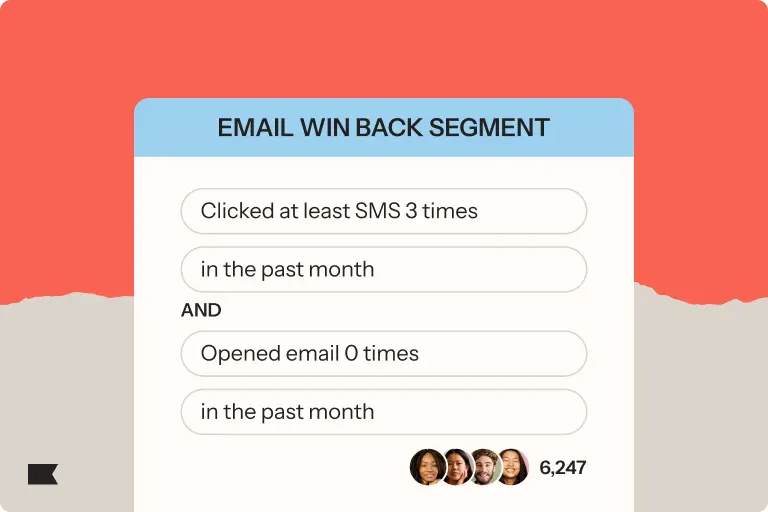11 transactional email best practices: how to get started

Transactional emails are as tricky as they are essential.
Without them, your customers would wonder whether their purchase disappeared into the ether.
Order confirmations, shipping notifications, and customer service messages aren’t only baseline forms of communication—they’re relationship builders that show transparency, great customer service, and encourage repeat purchases through care that doesn’t come with overt promotion.
Transactional emails earn notoriously high engagement rates, so it’s also worth experimenting with creative ways to add more value to them. Before you do, just make sure you understand what you’re allowed to send to remain compliant.
Here, we’ll show you some basic transactional email best practices plus a few more creative ones, to help you get the most out of these powerful forms of communication.
1. Accurately identify your business in your “from” address and sender name
If the primary purpose of an email is transactional, it’s mostly exempt from CAN-SPAM Act provisions—but the email still can’t contain “false or misleading routing information.” That just means your domain name and email address must accurately identify your business.
It’s not just regulators that enjoy this clarity. Inbox providers love it, too.
That means you need to send all transactional emails from a unique email sender address specifically created for sending emails from your brand’s online store. Your unique email sender address combines your domain name (@[domainname]) with a prefix of your choosing.
A unique sender address establishes trust and credibility with your customers, which makes your emails less likely to be flagged as spam. If they are, you’ll notice a decrease in your email deliverability.

Source: writer’s inbox
2. Opt for clear subject lines over clever ones
Email subject lines for marketing messages often benefit from some (clear) cleverness, but transactional email subject lines just need to be straightforward.
If your subject line is too clever, the primary purpose of the email could be mistaken as marketing-driven—which would subject it to CAN-SPAM regulations. Consider your subject line as the litmus test for defining the primary purpose of your email, and make sure it sticks to the point.
Here are a few examples:
- Order confirmation: “Order #123456 confirmed”
- Shipping confirmation: “A shipment from order #123456 is on the way”
- Account activation: “Account activation”

Source: writer’s inbox
3. Keep email copy brief and straightforward
Similar to your subject line, brevity is king for transactional emails. This is a matter of respect—your customers are expecting the basics about their order, and they just want to know when they’ll receive it.
Remember, you’ve already wooed them. Now is the time to be helpful, not promotional. Save the hard up-sell for your expanded post-purchase email or your win-back email.

Source: Critical Role
4. Allow your customers to reply
The main benefit of a great transactional email is that it’s your chance to provide stellar customer service. Clarity is one way to do that, but so is the option to interact with your customer service team.
Luxury brands should spend a lot of time and resources developing a concierge service. But even brands that don’t fall into this category should make it easy for customers to simply hit “Reply” and get connected to a representative.

Source: Critical Role
5. Address your customer by first name
Transactional emails are 1:1 emails, meaning they’re completely personalized to your customer. So it would be a waste not to address them by name.
You can do this in your greeting and maybe your subject line, as long as it doesn’t add clutter. The right marketing platform will make this easy by allowing you to add a dynamic field that populates someone’s first name automatically.
6. Stay true to your brand
You may not want to use your transactional emails to sell, but that doesn’t mean they need to look like a boring receipt.
Make sure your transactional emails look and sound like they come from your brand. That means using:
- Brand colors, fonts, and graphics
- Brand copy voice and tone
- Brand-appropriate content, such as social media links or educational resources (more on that next)
7. Include your social media links in the footer
Important note: Only include social media links in transactional emails if you’re sending to customers living in the US. Sending links to customers in Europe may be interpreted as a violation of GDPR, as it’s a promotional email gray area.
For your transactional emails to remain compliant with CAN-SPAM laws, your email needs to be primarily transactional in nature (we recommend an 80:20 split between transactional and promotional). This frees up room to include your social media links as part of your email footer.
Given that transactional emails have higher open rates than any other type of email, they’re a great way to get some visibility for your social accounts.

Source: ReallyGoodEmails
8. Include one link to an educational resource on your website
Education is an important part of the post-purchase process.
If your product comes with specific maintenance instructions to extend its life or a video on how to get the most out of using it, consider including a link to those resources via your transactional email flow.
Whether you’ve developed an elaborate instructional video or a simple FAQ, your transactional emails are a great conduit for post-purchase educational information.

Source: ReallyGoodEmails
9. Send user-generated content to reinforce the purchase
Not enough people are talking about this take on transactional emails: Their purpose is to get ahead of buyer’s remorse. The transparency, clarity, and trust you infuse into the post-purchase email experience are all a means to this end.
This is why we recommend experimenting with including user-generated content (UGC) in your transactional emails, such as:
- A screenshot of an Instagram post raving about your product
- A link to a YouTube review for your product
- An educational post made by one of your other customers
As always, this content should always be secondary to the fundamental parts of your message, like order numbers, tracking links, etc.
10. Notify customers of brick-and-mortar locations near them
If you have physical locations, use your transactional emails to remind your customers they exist. This will accomplish a few things:
- Make it easy for your customer to process a return if they need to—which is great customer service.
- Increase the likelihood that your customer will visit the store for a repeat purchase.
- Strengthen your local presence with online shoppers.
11. Add relevant product recommendations
This works especially well if the product your customer purchased is best used as part of a set. If you have products that enhance other ones, it makes sense to recommend them within an order confirmation.
And if you want to step up your customer service even more, make it easy for the customer to add those products to their existing order. Provide a clear timeline for when customers can still add to their order before it ships.
This is a great way to increase average order value (AOV), but be careful—the primary purpose of your email should still remain transactional.
How to set up a transactional email flow in Klaviyo
Because transactional emails are 1:1 in nature, automating them just makes sense. Could you imagine sending a series of transactional emails manually every time someone made a purchase? No, because that would be a terrible use of your time.
Here’s how Klaviyo makes it easy for you to set up an automated transactional flow:
In Klaviyo, transactional emails are triggered in response to an action the customer took. This trigger is called an “event”, and it will likely be a “Placed Order” event, synced through your ecommerce integration.
In the “Klaviyo Flows” tab, click “Create Flow” in the upper right, then click “Create From Scratch”.
In the builder, personalize your flow emails with dynamic data, like your customer’s name and the names of the products they purchased.
Don’t set it live just yet.
Because a transactional email sends to all customers, not just those who have subscribed to email marketing, it’s important that your emails are truly transactional. Klaviyo’s support team reviews them to make sure your brand is compliant with CAN-SPAM and GDPR. Once support verifies that your email is transactional, you’ll see the transactional status enabled for your emails.
This ensures that your customers receive the transactional message, regardless of any other marketing or transactional messages they’ve received within your Smart Sending window.
You’re done!
Related content

Related content

Discover the best email marketing platform for ecommerce in 2026. Compare top tools for data, automation, personalization, and deliverability.

Learn how to use Klaviyo SMS, segmentation, and hybrid flows to re-engage lapsed email subscribers, boost deliverability, and drive higher retention.

Boost D2C email revenue from 12% to 30% with the Klaviyo playbook: high-converting pop-ups, a 5-email welcome series, smart filters, and optimized abandonment flows.